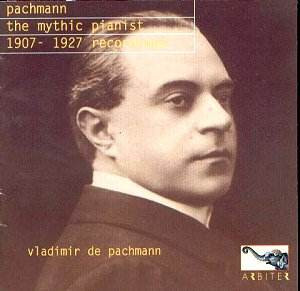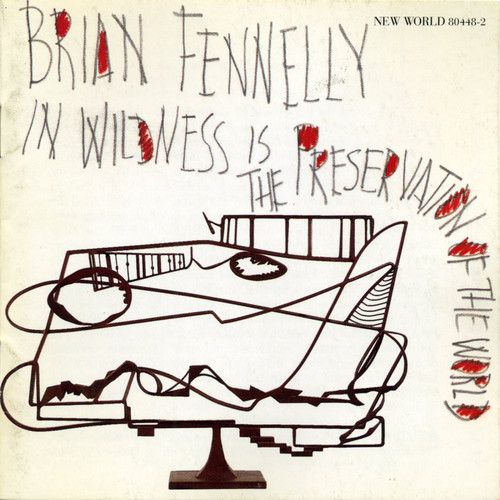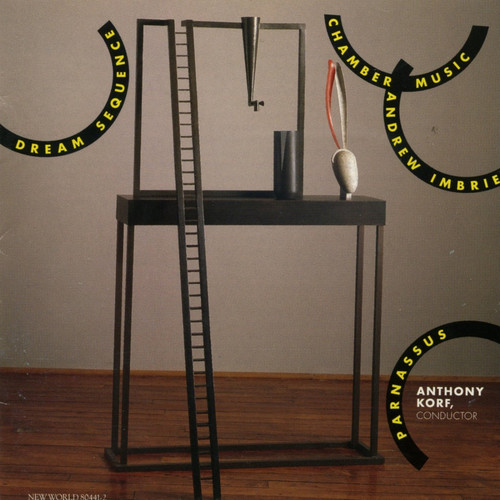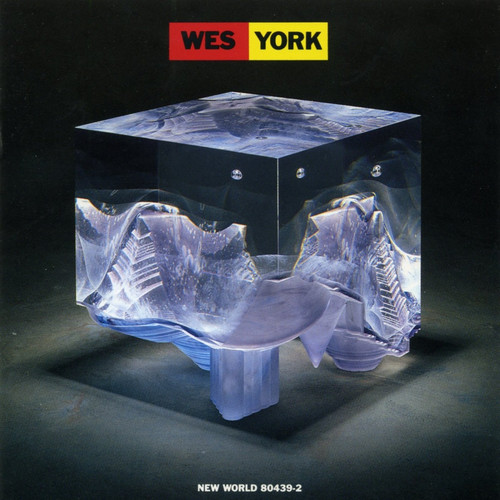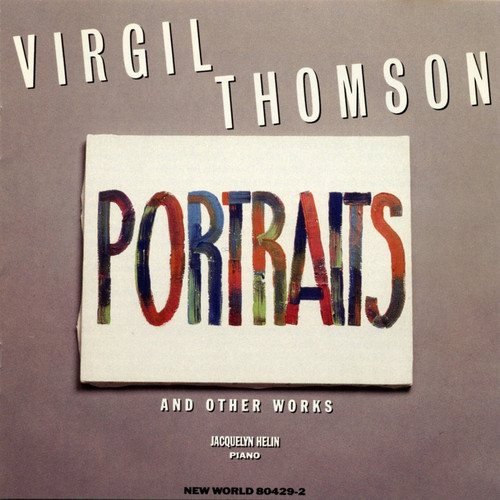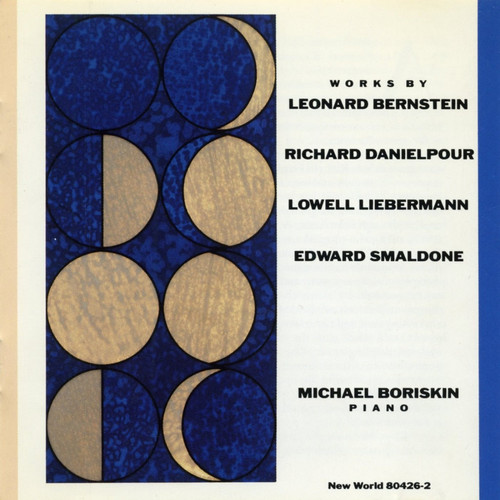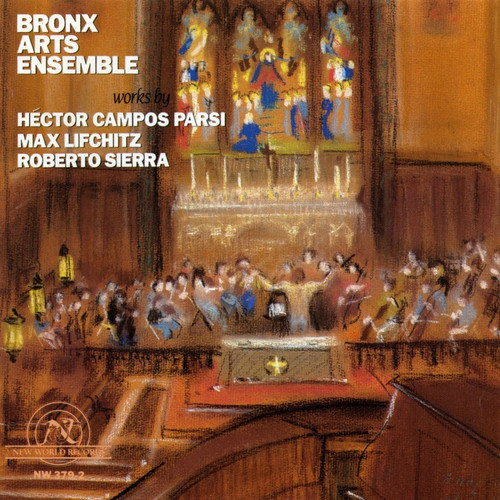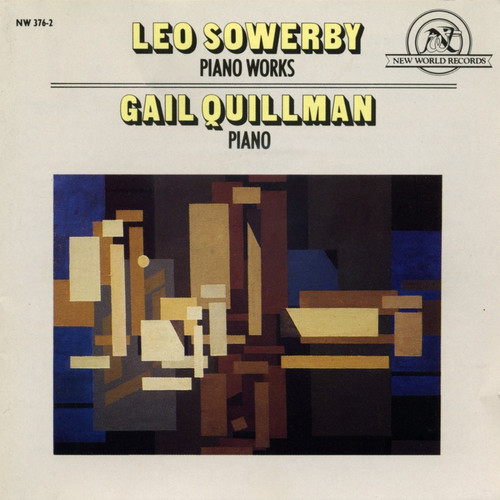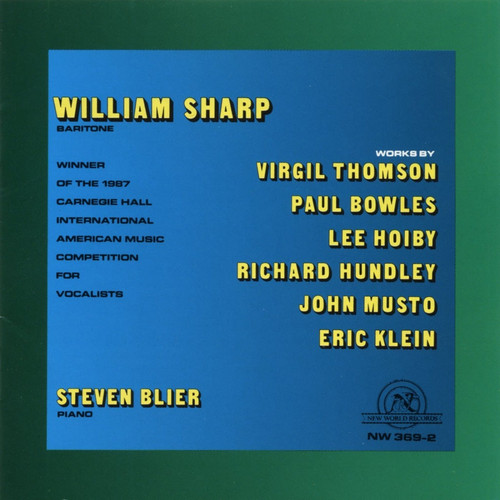Pachmann: The Mythic Pianist 1907-1927 Recordings
2001 release ** "From the G&Ts of 1907 to the Victors of 1927 the troublesome genius of Vladimir de Pachmann lives once again in Arbiter’s well-chosen compilation. His vertiginous rise to fame and his equally precipitate decline are the stuff of legend, no less so than his concert antics, his audience-lecturing and indeed record-buying lecturing (one of the famed "music and comment" discs is included here, a late HMV). Pachmann followed such as Anton Rubinstein as one of the titans of the keyboa…
On Alligators
2025 stock Four masterpieces by one of the world’s greatest composers of classical concert music, including three pieces that have never been released before. The fourth quartet is perhaps Wuorinen’s most complex and exciting composition, and it receives a passionate performance by the prestigious Brentano Quartet. Also included is the intense and colorful chamber piece On Alligators, conducted by the composer, and a moody piece for organ performed by one of the world’s greatest organists on on…
In Wildness Is The Preservation Of The World
The music on this recording is drawn from a range of solo, chamber, and orchestral works composed by Brian Fennelly (b 1937) over a period of two decades. In his thirty-year career, Fennelly has contributed more than sixty works to the repertoire of twentieth-century music. His most significant teachers were Mel Powell, Donald Martino, Gunther Schuller, George Perle, and Allen Forte.
The works presented here make use of a variety of harmonic systems: the complex and sophisticated serialism of In…
Dream Sequence (Chamber Music)
Andrew Imbrie (b 1921) is a composer whose independence and singularity of purpose have endowed a prodigious output that awaits wider discovery. His method of composing is not in and of itself remarkable. He is, rather, of a tradition wherein achievement is measured in terms of individuality, depth of expression, and craft.
His music reveals a preoccupation with line, which in turn generates form, harmony and color. Line also motivates the forward motion and energy that characterizes so much of…
Wes York
In a robustly maximalist age that gladly permits the fusion of unrelated styles and the flaunting of eclecticism, Wes York's (b 1949) music stands out as reductive, elliptical, elusive, implying diversity rather than spelling it out. It is a music that is unusual in its reconciliation of what had previously seemed two incompatible forms of Minimalism: the propulsive, harmony-and-rhythm driven sort pioneered by Philip Glass and Steve Reich, and the more mysterious and intangible ways of Morton F…
Portraits and other Works
Virgil Thomson's piano music can best be described as pure direct American plainsong. Hymn tunes get transposed, rhythms overturn or collide, often with comic results; cowboy songs turn into fugues. Thomson made use of all materials, from Sunday School ditties he learned as a child in Kansas City, to the tangos he heard in Paris in the Twenties, to the counterpoint of his formal musical education. Thomson's portraits often have the feeling of line drawings by a visual artist. This is because he …
Doppio Concertino / Flamenco Cyclothymia / Concerto For String Orchestra / Piano Quartet
Carlos Surinach (b 1915) is an American composer whose Spanish heritage, together with the rigors of German musical training, has enabled him to produce an oeuvre that "achieves an effect of novelty by exploiting all the familiar clichés of the `Spanish idiom' with new technical resources and with a completely non-impressionistic sensibility," as Gilbert Chase wrote in Music of Spain.
Like Manuel de Falla's Harpsichord Concerto, the Doppio Concertino (Double Concerto) of 1954 is basically neocla…
Piano Works
Apart from musical considerations, it is entirely appropriate that the work of Leonard Bernstein (1918-1990) stands beside the compositions of three younger Americans on this program of recorded premieres. By example and deed, Bernstein served like no other major American artist as a true role model for at least a couple of generations of aspiring musicians in this country. Moreover, his eclecticism as a composer and performer exemplified the polyglot nature of the arts in America.
Among the com…
Chamber Works
The woodwind quintet is to the wind instruments as the string quartet is to the strings. Composers have treated the heterogenous ensemble of flute, oboe, clarinet, bassoon, and horn as a unity for so long now that it has become a musical commonplace. The challenge in composing for the woodwind quintet is to weave a consistent musical fabric while respecting the disparate characters of the five instruments. The four composers represented on this recording meet this challenge with imagination and …
H'un (Lacerations) And Other Works
The music of the Chinese-American composer Bright Sheng (b 1955) sometimes floats like delicate fragrances on a breeze and sometimes screams and writhes in actual or remembered agony. This is music, to paraphrase William Blake, of innocence and of experience. The innocence and experience are not simply those of a boy growing up amid the terrors of China's Cultural Revolution—they are also components of a well-trained composer's creative equipment: the beloved folk music of a land left behind and…
Works By John Harbison And Ezra Laderman
Eclectic but distinctively original, John Harbison's Concerto for Viola and Orchestra reflects an artist of deep sensibility and training. Harbison (b 1938) is a recipient of the 1987 Pulitzer Prize and has received commissions from numerous ensembles and foundations. The brittleness sometimes found in Harbison's harmonic language bears the imprint of Roger Sessions, with whom he studied at Princeton; yet the lyricism of Harbison's melodic line is very much his own, a quality strikingly apparent…
Works By Irving Fine, Gian Carlo Menotii, Carl Ruggles, Harold Shapero
At the outset of his career, Harold Shapero (b in 1920) was widely recognized as one of his generation's most promising composers. While in his twenties, he undertook to study closely the musical phraseology and rhetoric Haydn, Mozart, and Beethoven, as a discipline to help him sharpen melodic contours and better manipulate larger musical forms. When the brief piano sonata he set out to compose based on classical principles took only a few days to finish, he decided to write two more. Although t…
The Flight Into Egypt ·The Natural World · Double Brass Concerto
A few years ago a German presenter asked me for my "artistic Credo," which seemed a characteristically European request, but in the spirit of international cooperation I furnished the following: "to make each piece different from the others, to find clear, fresh large designs, to reinvent traditions." Grand and general though it is, the statement seems a good place to begin describing the music on this record.
Sketches for all the pieces preceded their commissions, but the institutions and frie…
Divertimento, Sym No. 2, Night Scenes
Mario Davidovsky was a founding member of the Columbia-Princeton Electronic Music Center. His compositions apply classical compositional form to electronically generated sounds. His Divertimento is rich and subtle, and might even be described as impressionistic.
Maurice Wright’s Night Scenes, although not program music per se, is loosely inspired by nocturnal imagery, from the fantastical turn the imagination takes in the late hours. It is alternately agitated and full of dreamy string harmonic…
Piano Works
The vastly divergent reactions to twelve-tone composition of George Perle, David Del Tredici and Nicholas Thorne are a vivid reflection not only of their different generations, but of the unfolding of musical style change in America. Perle, born in 1915 and educated here at a time when twelve-tone composition was little understood, felt the urge to revise Schoenberg's method so as to reconcile serial chromaticism with the hierarchical elements of tonal practice. The system he evolved, known as “…
Works By Héctor Campos Parsi / Max Lifchitz / Roberto Sierra
Roberto Sierra (b 1953) is thoroughly versed in international composing techniques, yet dedicated to preserving the cultural identity of his Latin American origins. According to Sierra, he has “incorporated elements of folklore and of popular music (urban folklore) in order to create a music that in essence is Puerto Rican, and portrays the marvelous and contradictory world of [that] tropical island.”
Doña Rosita la Soltera (Doña Rosita the Spinster), for soprano and wind quintet, dates from 198…
Sonata No. 2 ( "Concord, Mass., 1840-1860") - Sonata
“This is not a nice sonata for a nice piano player,” wrote Charles Ives about his most famous work, “but something the writer had long been thinking about.”
All four movements were programmatically conceived around figures in the Transcendentalist movement (c. 1936-1860) in Concord, Massachusetts. The “Emerson” movement had begun as a piano concerto, the soloist representing Ralph Waldo Emerson, and the orchestra, the masses listen to him; “Hawthorne” was conceived for “a piano or a dozen pianos…
Piano Works
Leo Sowerby (1895-1968) was one of the great composers who wrote music at the keyboard. Although he is better known for his organ and choral works, his piano music is some of the richest and most original of his output. During the 1920s and early '30s, Sowerby often appeared as piano soloist in his concertos. He had very large, strong hands, and his treatment of the piano is vital, harmonically rich, and quite distinctive. He was a master of counterpoint and created an imposing body of piano wor…
Symphony No. 1 / Overture To "As You Like It"
John Knowles Paine's Symphony No. 1 is a milestone in the development of American music. It was not the first symphony written by an American (George Frederick Bristow, for many years a violinist in the New York Philharmonic, had already written several), but Paine's two essays in the medium are the first that could be received by the musical community here and abroad as works of a composer fully trained to the highest international (i.e., German) standards. Their premieres—The First Symphony in…
William Sharp, Steven Blier, Virgil Thomson, Paul Bowles, Lee Hoiby, Richard Hundley, John Musto, Eric Klein (5)
Works by Thomson, Bowles, Hoiby, Hundley, Musto and KleinAmerican art song has traveled a long way from the parlors of 19th-century America. The turn of this century brought its adolescent rebellion in the iconoclastic hands of Charles Ives, followed by an impressive, if somewhat retrospective, era heralded by such composers as Bacon, Chanler, Nordoff, and early Thomson. But by mid-century, what should have been a time of full adulthood was instead a curiously fallow period (which Philip L. Miller attributes to composers abandoning melody and Ned Rore…
